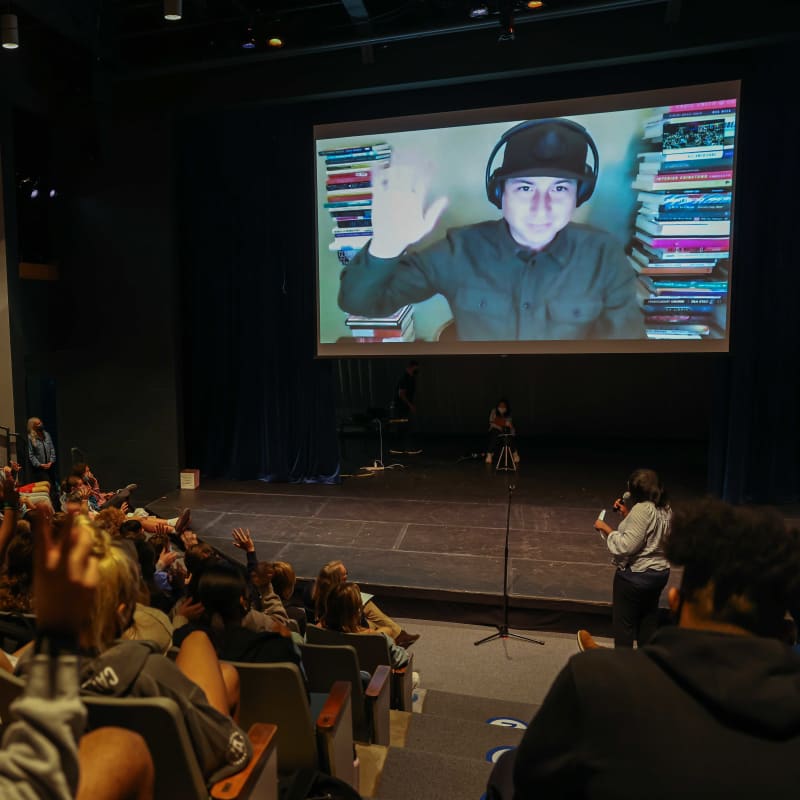Tommy Orange and the Power of Representation
November 19, 2021
On October 7th, the Pingree community was joined for a Zoom assembly with American novelist and Pulitzer Prize finalist Tommy Orange. As an enrolled member of the Cheyenne and Arapaho Tribes of Oklahoma, Orange centers his writing around his identity as a Native person living in an urban environment. Students and faculty posed questions to Orange for a live Q&A discussion, but he also asked the audience questions: What are the misconceptions we hold around Native life? What limited and blanketed kinds of representation are there in popular culture? And why do we rarely read, see, or hear anything about Native peoples existing in the contemporary world.
In his 2018 book, There There, Orange’s storyline is intertwined with many different Indigenous perspectives, especially those of a group of young Native people living in an urban setting. “Getting us to cities was supposed to be the final, necessary step in our assimilation, absorption, erasure, the completion of a five-hundred-year-old genocidal campaign,” Orange writes in the prologue to There There. “But the city made us new and we made it ours.” The characters and their lives are modeled after aspects of Orange’s own personal experience, giving depth and reality to what this living is like. The reclaiming of Native identity within the walls of a city is a testament to the resilience of Native populations across the nation. But how is one supposed to reclaim an identity that the media rarely shows? Tommy Orange asked listeners to take a minute and try to think of a famous Native person in this country. Many students and faculty could not conjure up an answer, and while it is not in our immediate power to change who walks on red carpets or the amount of Indigenous-identifying models who get coverage in the media, it is possible to alter what we absorb so that we can further Tommy Orange’s work of increasing Indigenous visibility. It is our responsibility to support those whose work reflects the persistence and existence of the Native people, past and present, on this land.
In our age of electronic resources and social media, there are more opportunities for connecting with, and amplifying, Native voices than ever before. To read the stories that deserve to be read, check out Tommy Orange’s Book There There. To watch the shows that deserve to be seen, try Reservation Dogs (also on Disney+) and Rutherford Falls (the full show can be watched on Peacock). To listen to the unique and powerful voices that deserve to be heard, use this Spotify link. To see the art that is a testament to the thriving Native cultures and the artists who showcase them here is an art exhibit.
It is our responsibility as consumers of media to amplify the perspectives that the mainstream media often ignores. There is a privilege in getting to immerse oneself in various expressions of Native culture. Tommy Orange’s assembly emphasized the importance of visibility for Native people in all aspects, the ones we usually take for granted. Television, music, literature, art, are all ways of recognizing the Native people of past and present and understanding that their realities involve grocery shopping, watching YouTube, and living in cities, too.


